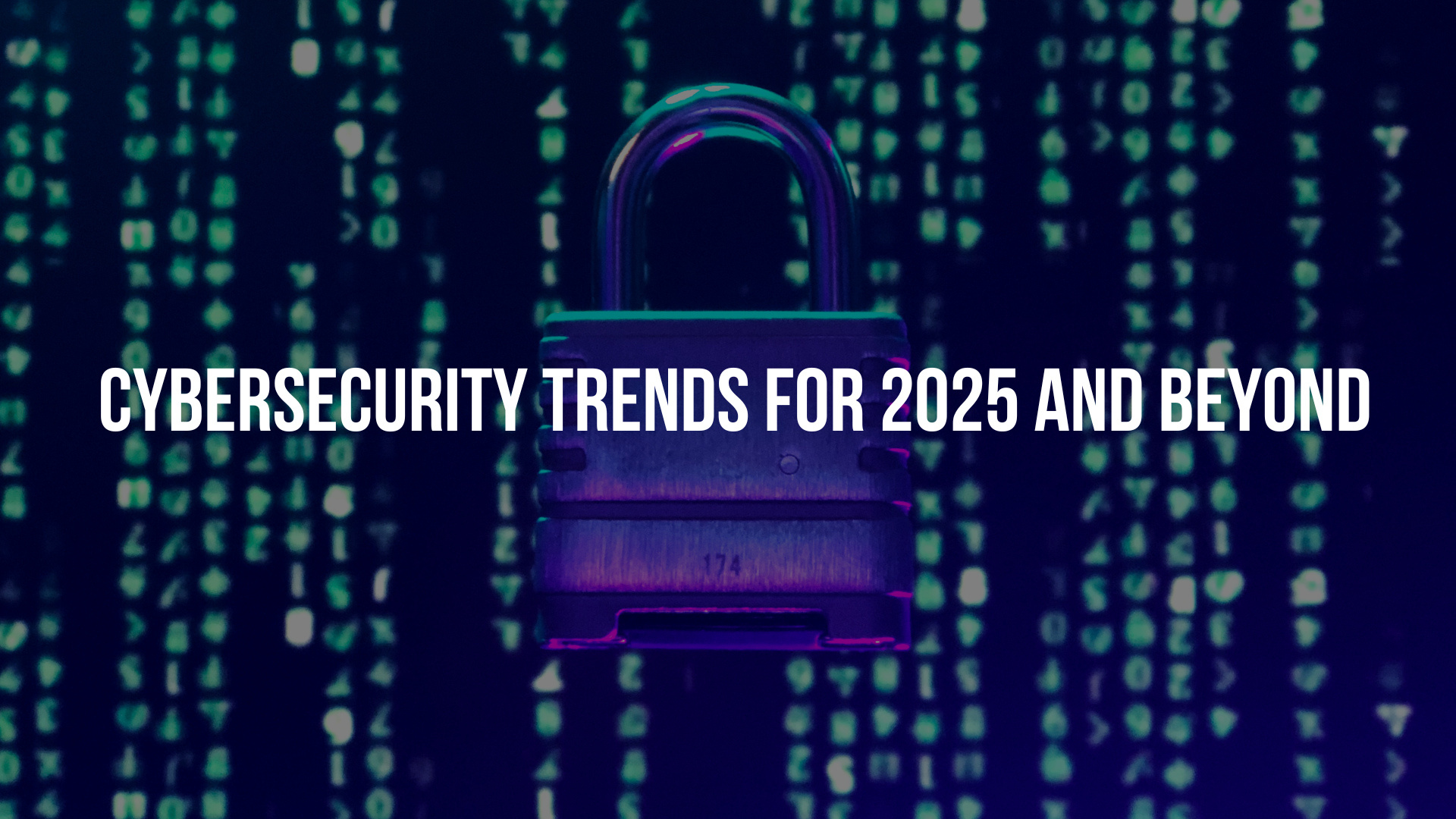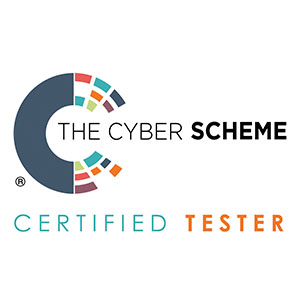
Cybersecurity Trends for 2025 and Beyond
According to research conducted by Checkpoint, the third quarter of 2024 saw a staggering 75% increase in the number of cyberattacks targeting businesses as compared to the same period in 2023. As we look at 2025, this trend is expected to accelerate. With new threats emerging faster than ever, businesses must prepare for the next wave of cybersecurity challenges. From AI-driven attacks to quantum computing, the future demands a shift in how we protect, detect, and respond.
In this blog, we’ll explore the critical cybersecurity trends that will shape 2025 and beyond and provide actionable insights to help you stay one step ahead in an increasingly complex threat landscape.
The Rise of AI-Driven Cyber Threats
One of the most alarming cybersecurity trends of 2025 is the rise of AI-driven cyberattacks. Cybercriminals are increasingly leveraging AI to automate attacks, launch convincing phishing scams, and develop highly sophisticated malware. Not only this, but AI also allows attackers to scale their operations, exploit vulnerabilities and avoid detection more effectively than ever.
Why will this trend continue to grow? The answer lies in the accessibility of AI technology. AI tools are become more affordable and user-friendly. This democratisation of AI means that even small-time criminals can adopt these tools to enhance their attacks. This in turn allows cybercriminals to analyse vast amounts of data, enabling them to pinpoint weaknesses in security systems and craft personalised attacks that are harder to detect.
So, what can businesses do to defend themselves? Businesses can leverage AI to combat these threats, but the key lies in proactive threat detection. A blended approach combining AI with expert human judgment offers the best protection. AI provides speed and scalability, while human expertise ensures adaptability and deeper analysis of complex threats. This combination can help businesses stay ahead of the ever-evolving cybercriminal tactics. Without it, businesses risk missing critical threats and facing serious financial and reputational damage.
The Increased and More Frequent Threat of Ransomware
Ransomware attacks have become one of the most prevalent and damaging threats in the cybersecurity landscape. Over the past few years, they’ve evolved from simple file-locking malware into highly sophisticated attacks targeting critical infrastructure, large enterprises, and even governments. The rise of ransomware-as-a-service (RaaS) has fuelled this surge, allowing attackers, regardless of technical skill, to launch complex attacks and profit from them. This has led to a sharp increase in this cybersecurity trend with the potential of becoming a multi-million-dollar industry.
In 2025 and beyond, the ransomware landscape will likely evolve even further. Predictions suggest that attacks will become more targeted and persistent, with attackers employing more advanced tactics to bypass traditional security measures. While phishing emails and exploit kits will be used as entry points cybercriminals are expected to increase the use of social engineering tactics to manipulate employees into facilitating the attack. Additionally, we may see a rise in double-extortion tactics, where attackers not only lock data but also threaten to release sensitive information unless the ransom is paid.
For businesses, the implications of this rising threat are clear. Companies that fail to adapt to these evolving tactics risk catastrophic consequences, including but not limited to financial loss, operational downtime, and irreparable damage to their reputation. To stay ahead, businesses must move beyond traditional defence mechanisms and implement proactive, holistic security solutions. Measures like employee cybersecurity training, network segmentation, and frequent data backups combined with strong incident response plans, can help businesses defend against the growing ransomware threat. Those failing to adopt a proactive stance may soon find themselves facing a debilitating attack that could put their very existence at risk.
Zero Trust Architecture Becoming the Standard
Zero Trust architecture has become a buzzword in cybersecurity, but what exactly does it mean? At its core, Zero Trust means “never trust, always verify.” This model operates under the assumption that no user, device, or network is trustworthy, even if they are inside the corporate network. Every access request, whether from inside or outside the network is treated as potentially dangerous and must be thoroughly verified before being granted.
Why is this cybersecurity trend becoming so crucial as we move forward in 2025? As businesses adopt remote work, cloud-based systems, and more interconnected technologies, traditional security methods are no longer enough. With a broader attack surface, the risk of a breach grows exponentially.
With Tech giants like Google and Microsoft implementing Zero Trust architecture to protect their growing networks, the coming years will see a rise in Zero Trust adoption. Companies that fail to adopt Zero Trust could find themselves exposed to escalating cyber threats.
Cybersecurity Mesh and Distributed Security Architectures
As we move further into 2025, cybersecurity mesh and distributed security architectures are becoming essential for businesses to stay safe. But what exactly are these concepts, and why should businesses care?
Cybersecurity mesh is a modern approach to security that treats each device, system and user as a distinct point, rather than relying on a traditional, centralised security model. It complements Zero Trust, ensuring that each request for access is verified, regardless of where it originates. With cybersecurity mesh, businesses can ensure consistent protection across various environments, no matter where the data or user is located. Distributed security architectures provide the flexibility to deploy tailored security measures for each system or device, reducing vulnerabilities and improving protection across diverse environments.
As businesses become more interconnected across systems, devices, and networks, the shift toward cybersecurity mesh and distributed security architectures is not just a trend. By embracing these innovative models, organisations can ensure stronger, more flexible protection across diverse environments. The future of cybersecurity lies in decentralising security, and businesses that adapt now will be better equipped to navigate the increasingly complex threats later.
Rise of Privacy-Enhancing Computation and Secure Data Sharing
With data being the cornerstone of business operations privacy-enhancing computation is becoming a game changer. This technology allows businesses to analyse data securely without compromising privacy. Through techniques like homomorphic encryption and secure multi-party computation, companies can gain insights from sensitive data without ever exposing it.
Why is this cybersecurity trend key? With growing concerns about data breaches, privacy laws, and the need to maintain consumer trust, businesses are under pressure to rethink their data strategies. Privacy-enhancing computation offers a way to comply with regulations like GDPR and avoid costly breaches while still benefiting from data insights.
As data becomes central to business strategies, big and small, privacy-enhancing computation will be crucial for protecting both data and trust. For businesses looking to stay ahead, adopting these technologies will not just be an option—it will be a necessity.
Convergence of IT, OT, and IoT Security
In today’s world the lines between IT (Information Technology), OT (Operational Technology), and IoT (Internet of Things) security are beginning to blur. This cybersecurity trend, known as the convergence of IT, OT, and IoT security refers to the process of aligning and securing the different technologies and systems that businesses use across these three domains. With the increasing interdependence of these systems—where data and processes flow seamlessly between IT, OT, and IoT—traditional, separate approaches to securing each domain are no longer sufficient. Instead, a unified cybersecurity strategy that covers all three areas is essential for comprehensive protection.
Why does this convergence matter so much as we look ahead to 2025? The increasing interdependence of technology in sectors like manufacturing, healthcare, and energy means that a vulnerability in one area (like IoT devices) can quickly ripple across IT and OT systems, leading to widespread disruption. One cyberattack can potentially impact everything from production lines to corporate networks.
Looking forward, we’ll see organisations working toward a more cohesive approach to cybersecurity, where IT, OT, and IoT are no longer treated as separate entities. In 2025, businesses will increasingly adopt integrated security frameworks that allow them to monitor and protect all layers of their operations from a single point. This unified strategy will help ensure that vulnerabilities in any one area don’t compromise the security of the entire system.
As this cybersecurity trend continues to evolve, organisations that embrace the convergence of IT, OT, and IoT security will be better prepared to face the complex challenges of an interconnected world.
Biometric and Behavioural Authentication Becoming Standard
Biometric and behavioural authentication are set to become the go-to methods for securing digital systems. Technologies like fingerprint scans, facial recognition, and even behavioural biometrics—such as the way you type, walk, or use your devices—are changing the game when it comes to user verification. These technologies not only offer an added layer of security but also enhance the user experience by making logins faster and more seamless.
Why is this cybersecurity trend gaining momentum heading into 2025? As privacy concerns grow and users demand easier, safer login options, businesses are adopting biometric solutions. With minimal effort, users can access their accounts without needing to remember passwords, making it a win-win for both security and convenience.
In the next few years biometric authentication will expand across both enterprise and consumer environments. Biometrics are well on their way to replace passwords as the primary way to access sensitive information, offering a more secure and user-friendly solution.
Behavioural biometrics will also become a key part of this shift, helping to detect fraud in real time by continuously monitoring user behaviour, such as typing patterns or device usage. This adds an extra layer of protection to further safeguard against unauthorised access.
Moving forward, businesses and consumers alike will embrace biometric authentication for a safer and more seamless online experience.
The Growing Threat of Quantum Computing
Quantum computing is no longer a distant concept—it’s rapidly becoming a reality, and it could soon disrupt cybersecurity as we know it. The reason? Quantum computers could easily break the encryption algorithms that protect our sensitive data today.
As quantum computing evolves in the coming decades, cybersecurity strategies will need to shift dramatically. Traditional encryption methods, like RSA and ECC that rely on the complexity of factoring large numbers or solving difficult problems won’t be effective as quantum computers could easily break them. As a result, current solutions that protect your data could become vulnerable, exposing your business to catastrophic risk.
In response to this looming threat, researchers are already developing quantum-safe algorithms and quantum-resistant encryption solutions. These are being developed to withstand the power of quantum computers and protect your data from future attacks.
As this area of research evolves, it’s clear that the future of digital security will be determined by the successful integration of quantum-resistant encryption. The rising attention on quantum-resilient solutions signals a critical shift in how we must approach the protection of data in the future decades.
As we look ahead, the cybersecurity challenges we face are only becoming more complex. From AI-driven cyberattacks that scale and adapt faster than ever to ransomware attacks that threaten to cripple operations, the challenges are becoming more complex. Furthermore, Quantum computing will also bring new risks to traditional encryption methods, and the convergence of IT, OT, and IoT security will create new vulnerabilities across networks. To combat these risks, businesses must embrace a more proactive approach. Zero Trust frameworks will help protect critical systems by continuously verifying access requests. Biometric and behavioural authentication will ensure that only the right individuals gain access to sensitive data. Additionally, the rise of privacy-enhancing computation will allow businesses to comply with privacy regulations while safely sharing data.
These solutions are essential for staying ahead of the curve and safeguarding operations against the threats of tomorrow.









